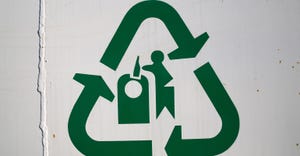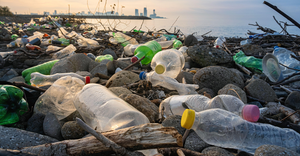September 1, 2011
When one looks at nationwide estimates of municipal solid waste (MSW) generation and how it is processed — i.e., recycled, composted, landfilled or sent to a waste-to-energy (WTE) facility — there are two primary sources: the U.S. Environmental Protection Agency’s (EPA) “Municipal Solid Waste in the United States” report, and the “State of Garbage in the United States” report (a joint effort by BioCycle magazine and Columbia University). While both reports attempt to quantify the U.S. waste stream, they do so in markedly different ways.
EPA uses a methodology called “materials flow” that looks at various industry production data for key waste components (e.g., plastic, paper, etc.) adjusted for imports, exports and product lifetimes. This approach assumes that if something has been produced, it will eventually be thrown away.
In contrast, the BioCycle report quantifies MSW generation by conducting surveys of reported waste tonnages from each state and then balancing. They assume that generated MSW equals the total of reported recycled, landfilled, WTE and composted tonnages. This data is adjusted to remove non-MSW materials so that data is equivalent to that provided by the EPA’s report. In theory, this should allow for an apples-to-apples comparison. There are a number of reasons why this is not quite so, but we’ll leave that for a future column.
Some argue that local waste disposal and composition data guides decisions made at the municipal and regional level, rendering these national reports irrelevant. While there is some merit to this view, in many instances sample and sort studies are not conducted locally or regionally due to cost limitations. Or, if a study was conducted at all, it was done years ago when municipalities and companies had money to burn.
Waste composition is becoming an increasingly critical factor as municipalities and other waste management entities set sustainability, waste diversion and enhanced recycling targets. In the absence of available funds to conduct a localized sample and sort study, many entities seek a rough estimate of their waste composition culled from these national studies. An example is North Carolina, in which only 2 to 5 percent of counties have conducted sample and sort studies in the past 15 years.
Last month, a notice was placed in the Federal Register indicating EPA seeks to modify its report by developing new definitions and protocols to measure MSW. They also wish to incorporate construction and demolition wastes (C&D) and non-hazardous industrial materials into future reports, segments that have not been routinely tracked before.
“While the structure, content and methodology of the MSW Characterization Report has remained essentially unchanged, the manner in which the report is used has changed dramatically, and it is now used as the basis for decisions that were unanticipated when the report was first conceived,” says EPA in the notice. “Our goal is to produce a measurement approach and resulting report that provides appropriate data to support a broad array of uses, including recycling, source reduction and waste prevention.”
EPA’s proposed changes, if implemented with careful consideration of the nearly 50 years of existing historical data, could certainly enhance the report’s value. However, EPA should ensure that these enhancements are transparent and still allow for meaningful analysis. They might take a lesson from BioCycle, which modified its report methodology a few years ago, skewing observed trends.
A number of comments on the changes suggest EPA is considering an open-source, Web-based data collection and measurement tool. It’s not clear what is meant by “open source” in this instance, but it could mean the data sources used by EPA are accessible by anyone or that anyone would be allowed to contribute to data collection. The former would be a nice way to make the materials flow approach more transparent to end users. But the latter strikes me as a looming train wreck, since validating user-submitted data will be challenging at best.
Regardless, the way in which EPA modifies the report is important and should be approached with all diligence to ensure the result is a blockbuster rather than an industry flop.
You May Also Like


